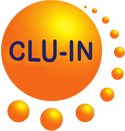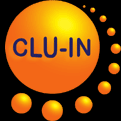Search Result
COAGULANT-ENHANCED SORPTION FOR IN SITU REMEDIATION OF PFAS-IMPACTED GROUNDWATER SYSTEMS
Simcik, M., W.A. Arnold, and K. Pennell. SERDP Project ER-2425, 19 pp, 2019
Filed Under: Research
Filed Under: Research
The main objective of this project was to develop a cost-effective, in situ method using commercially available drinking water coagulants as sorption enhancers to sequester PFOS, PFOA, PFNA, PFHxS, PFHpA, and PFBS in groundwater systems to prevent migration to drinking water supplies. The central hypothesis was that the addition of chemical coagulants used in the drinking water industry and other water treatment applications would enhance PFAS sorption to the soil, reducing PFAS mobility in the subsurface over long periods. Results of batch tests using excavated aquifer material indicated that both polydimethylamine diallyldimethyl ammonium chloride and polyamine were successful at increasing the sorption of PFAS for retention by the aquifer material. https://www.serdp-estcp.org/content/download/51375/505520/file/ER-2425%20Executive%20Summary.pdf
Filed Under: Research
Filed Under: Research
The main objective of this project was to develop a cost-effective, in situ method using commercially available drinking water coagulants as sorption enhancers to sequester PFOS, PFOA, PFNA, PFHxS, PFHpA, and PFBS in groundwater systems to prevent migration to drinking water supplies. The central hypothesis was that the addition of chemical coagulants used in the drinking water industry and other water treatment applications would enhance PFAS sorption to the soil, reducing PFAS mobility in the subsurface over long periods. Results of batch tests using excavated aquifer material indicated that both polydimethylamine diallyldimethyl ammonium chloride and polyamine were successful at increasing the sorption of PFAS for retention by the aquifer material. https://www.serdp-estcp.org/content/download/51375/505520/file/ER-2425%2
The Technology Innovation News Survey welcomes your comments and
suggestions, as well as information about errors for correction. Please
contact Michael Adam of the U.S. EPA Office of Superfund and Emergency Management at adam.michael@epa.gov or (703) 603-9915
with any comments, suggestions, or corrections.
Mention of non-EPA documents, presentations, or papers does not constitute a U.S. EPA endorsement of their contents, only an acknowledgment that they exist and may be relevant to the Technology Innovation News Survey audience.




